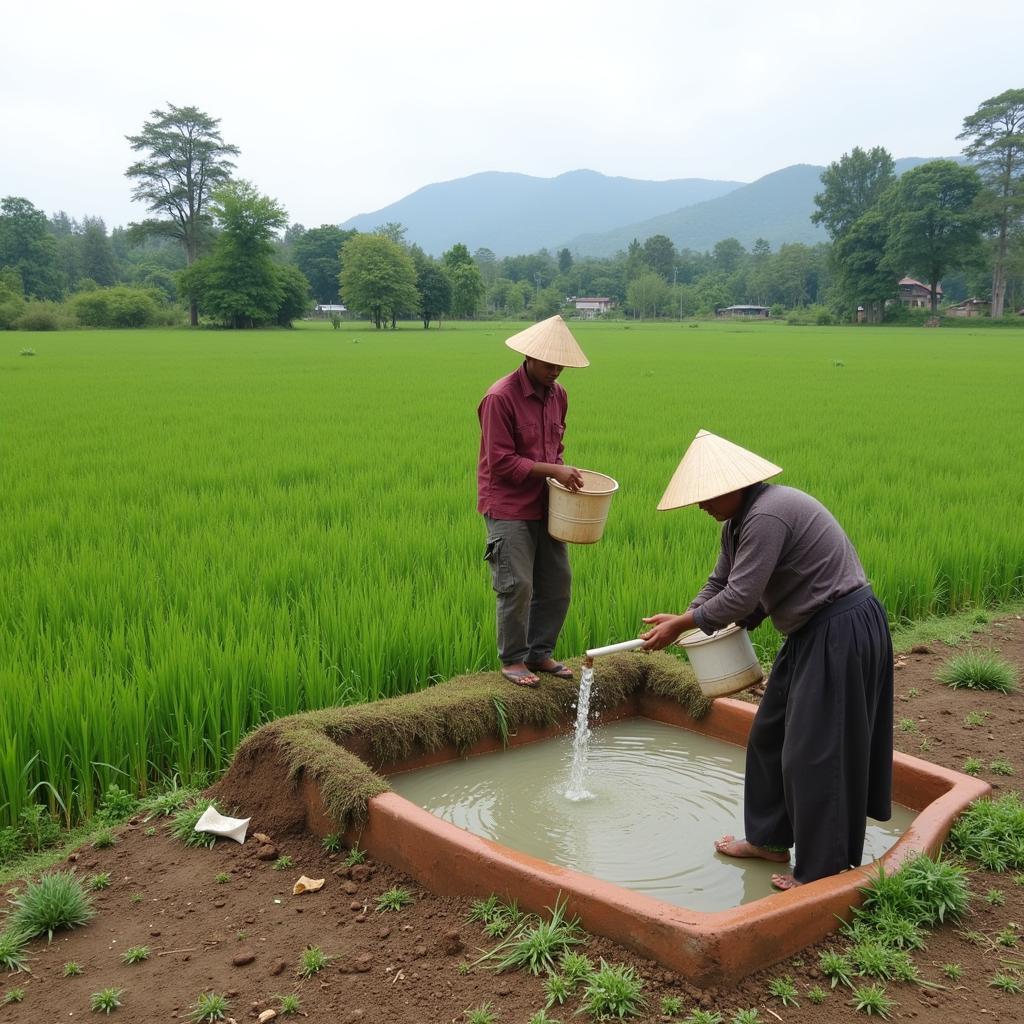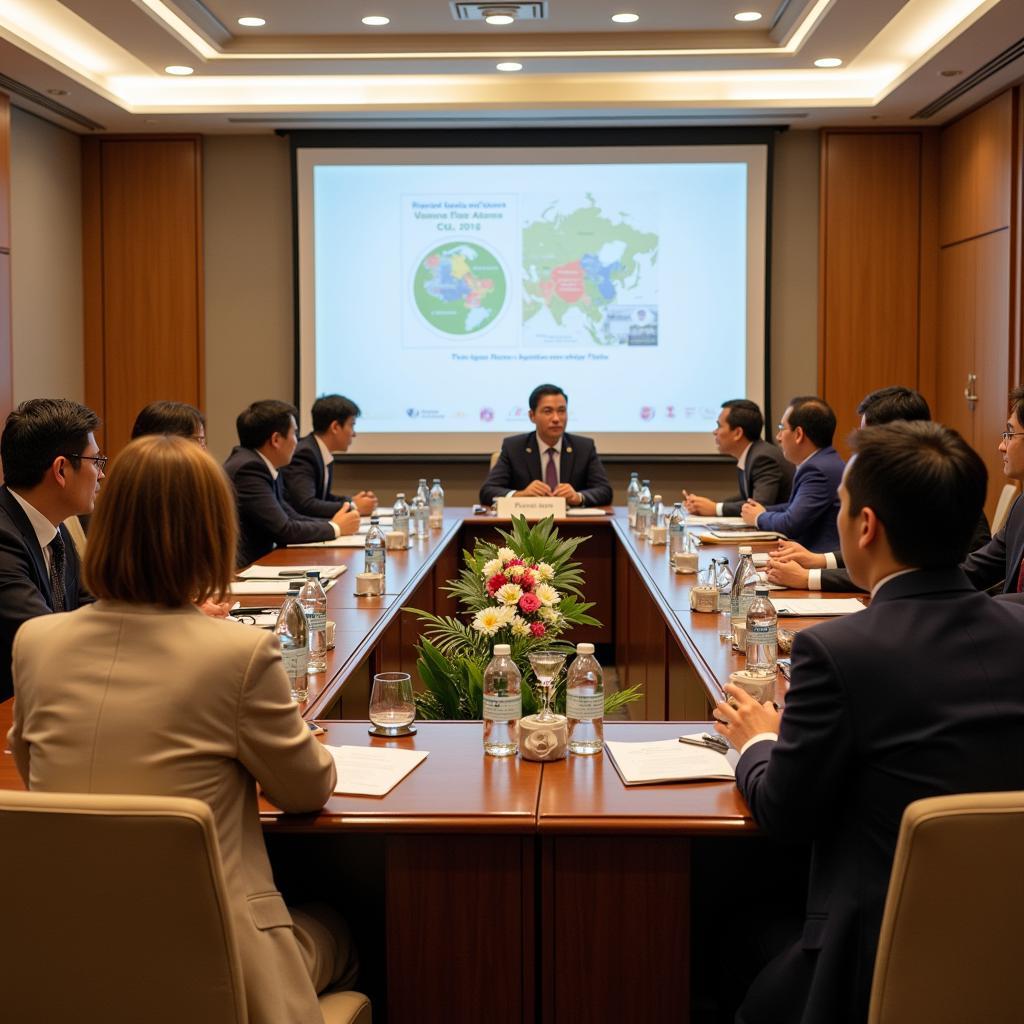Southeast Asia, home to the diverse nations of ASEAN, faces significant challenges from climate change. This region is exceptionally vulnerable to rising sea levels, extreme weather events, and shifts in rainfall patterns. These factors threaten food security, water resources, and the livelihoods of millions. “Adaptation to climate change” has become a crucial area of focus for ASEAN member states as they work to build resilience and mitigate the impacts of a changing climate.
 Impact of climate change on Southeast Asia
Impact of climate change on Southeast Asia
This article delves into the multifaceted landscape of climate change adaptation in ASEAN, examining the unique vulnerabilities and comparing the strategies employed by different nations in the region. We’ll explore the lessons learned, best practices, and collaborative efforts shaping a climate-resilient future for Southeast Asia.
ASEAN’s Climate Change Vulnerability: A Shared Challenge
The geographical diversity of ASEAN nations translates into a wide range of climate change vulnerabilities. Coastal regions, home to major cities and critical infrastructure, are increasingly at risk from rising sea levels and storm surges. Meanwhile, agricultural-dependent communities face challenges from erratic rainfall, droughts, and floods, impacting food production and livelihoods.
 Farmers adapting to drought conditions in an ASEAN country
Farmers adapting to drought conditions in an ASEAN country
Navigating the Adaptation Landscape: A Comparative Look at ASEAN’s Strategies
ASEAN nations have recognized the urgency of climate change adaptation and have developed national policies and action plans to address the issue. These strategies often encompass a multi-sectoral approach, focusing on areas such as:
- Coastal Protection: Implementing early warning systems for extreme weather events, constructing seawalls and coastal barriers, and restoring mangrove forests as natural buffers against storm surges.
- Water Resource Management: Improving water use efficiency in agriculture, investing in water storage and irrigation infrastructure, and implementing drought-resilient farming practices.
- Agricultural Adaptation: Promoting climate-resilient crop varieties, diversifying livelihoods in rural communities, and providing access to climate information services for farmers.
Sharing Knowledge and Building Regional Resilience: Collaborative Efforts in ASEAN
Recognizing the interconnectedness of climate change impacts, ASEAN member states are actively engaged in regional cooperation initiatives. These collaborative efforts focus on sharing knowledge, best practices, and technologies for effective climate change adaptation. Platforms like the ASEAN Climate Resilience Network (ACRN) facilitate the exchange of information and support capacity-building programs across the region.
 Representatives from ASEAN nations collaborating at a climate change summit
Representatives from ASEAN nations collaborating at a climate change summit
Conclusion: Towards a Climate-Resilient ASEAN
Adaptation to climate change is an ongoing process that requires a long-term vision, sustained commitment, and collaborative action. ASEAN nations, while facing significant challenges, are demonstrating proactive steps towards building climate resilience. By learning from each other’s experiences, sharing knowledge, and strengthening regional cooperation, ASEAN can pave the way for a more sustainable and climate-resilient future for its people and ecosystems.
FAQs
1. What are some of the major climate change impacts faced by ASEAN countries?
ASEAN countries are particularly vulnerable to rising sea levels, extreme weather events like typhoons and floods, and changes in rainfall patterns leading to droughts and water scarcity.
2. How are ASEAN nations collaborating to address climate change adaptation?
ASEAN has established platforms like the ASEAN Climate Resilience Network (ACRN) to facilitate knowledge sharing, technology transfer, and capacity building for climate change adaptation among member states.
3. What are some examples of successful climate change adaptation strategies in ASEAN?
Successful strategies include mangrove restoration for coastal protection in Vietnam, water-efficient rice farming in the Philippines, and early warning systems for extreme weather events in Thailand.
4. What are the key challenges to effective climate change adaptation in ASEAN?
Challenges include securing adequate funding, enhancing institutional capacity, bridging data gaps, and ensuring equitable access to adaptation solutions for vulnerable communities.
5. How can individuals contribute to climate change adaptation efforts in ASEAN?
Individuals can support sustainable practices, advocate for climate-resilient policies, participate in community-based adaptation initiatives, and stay informed about climate change issues in the region.
